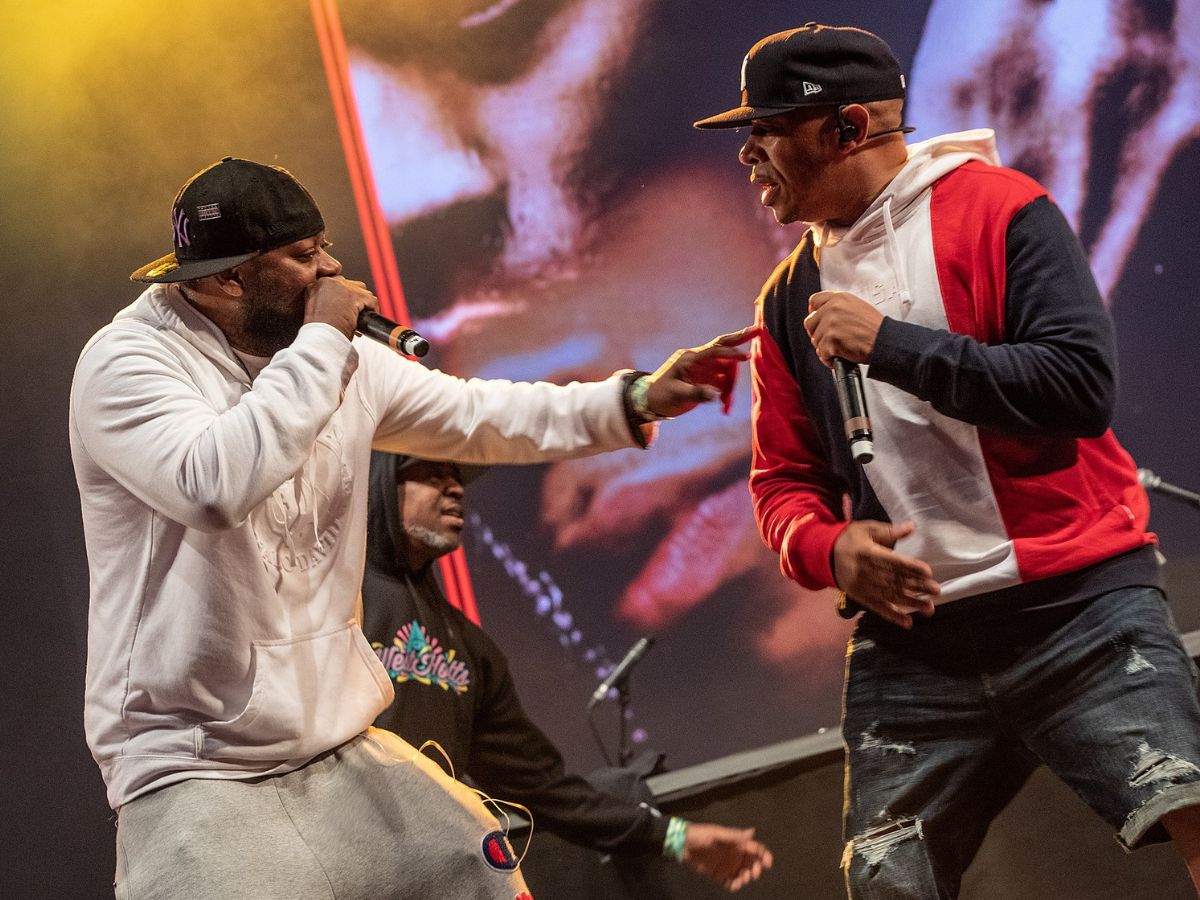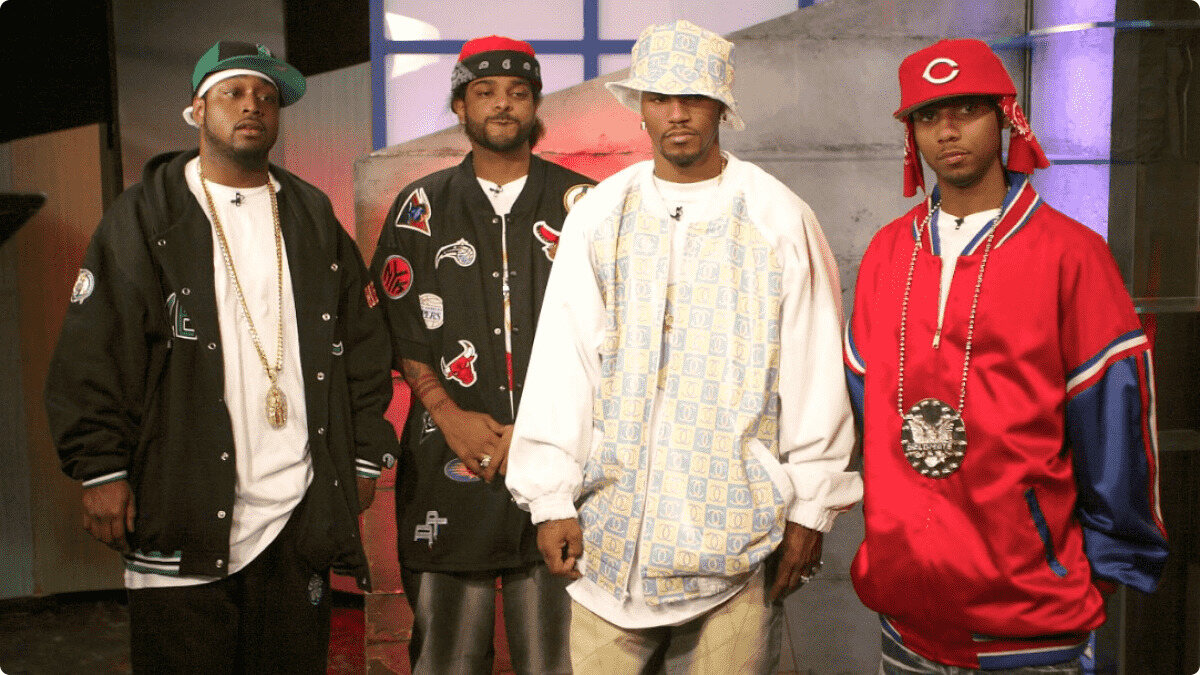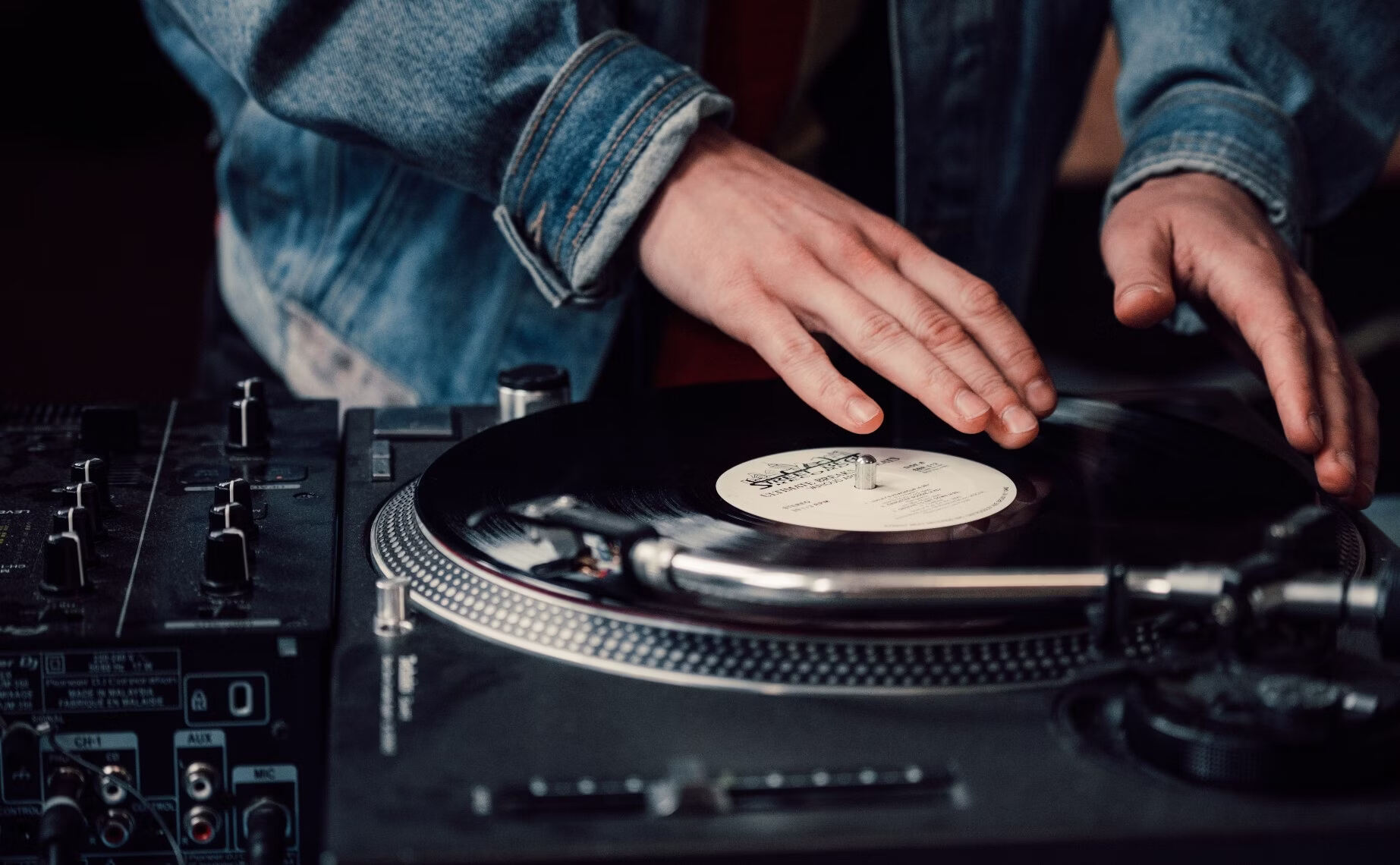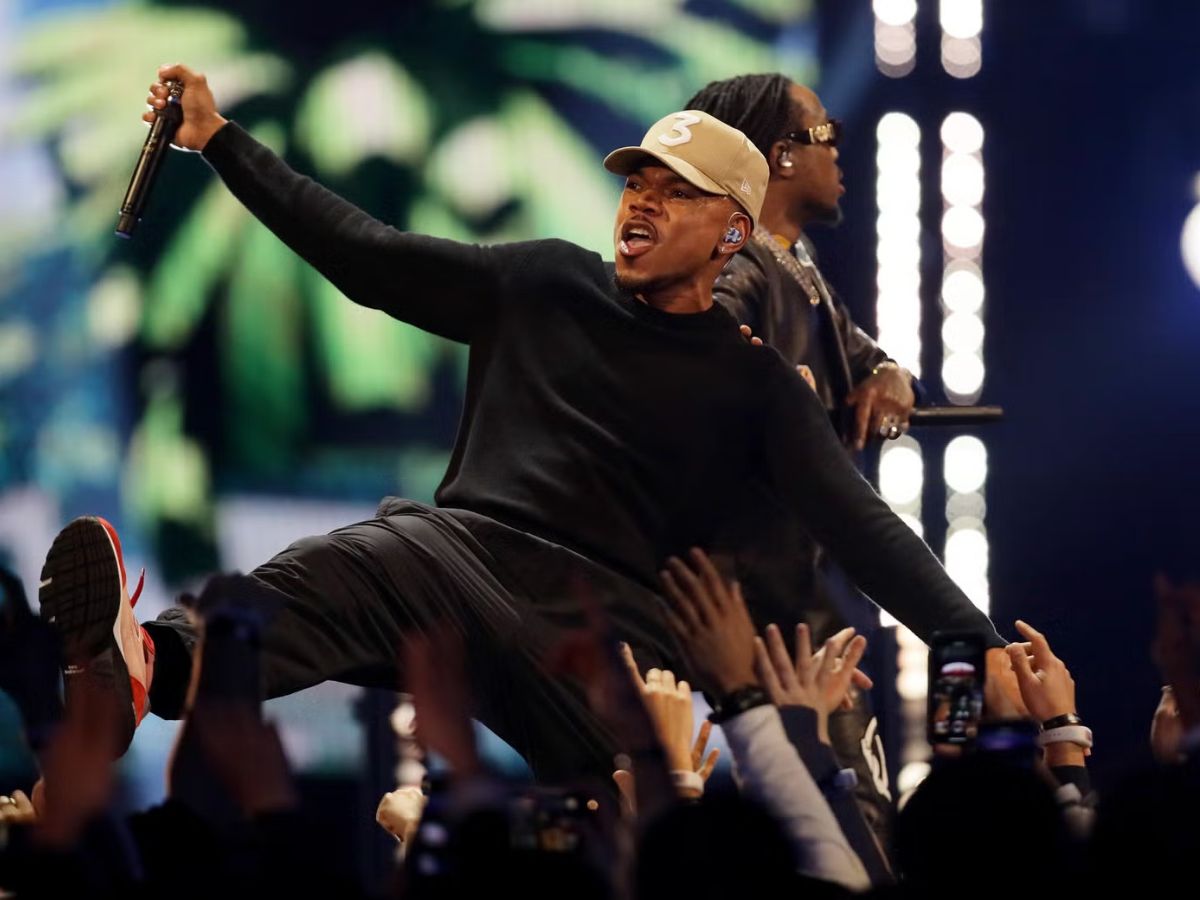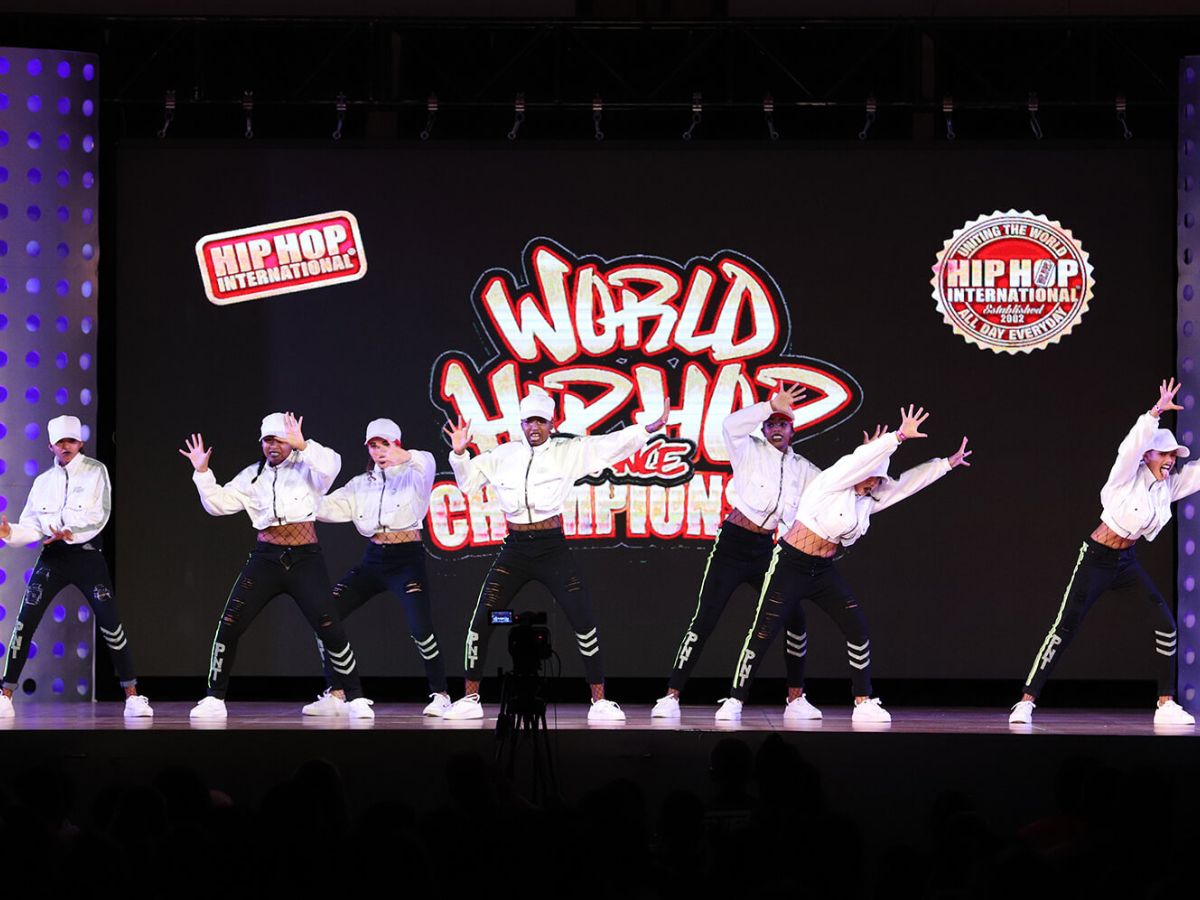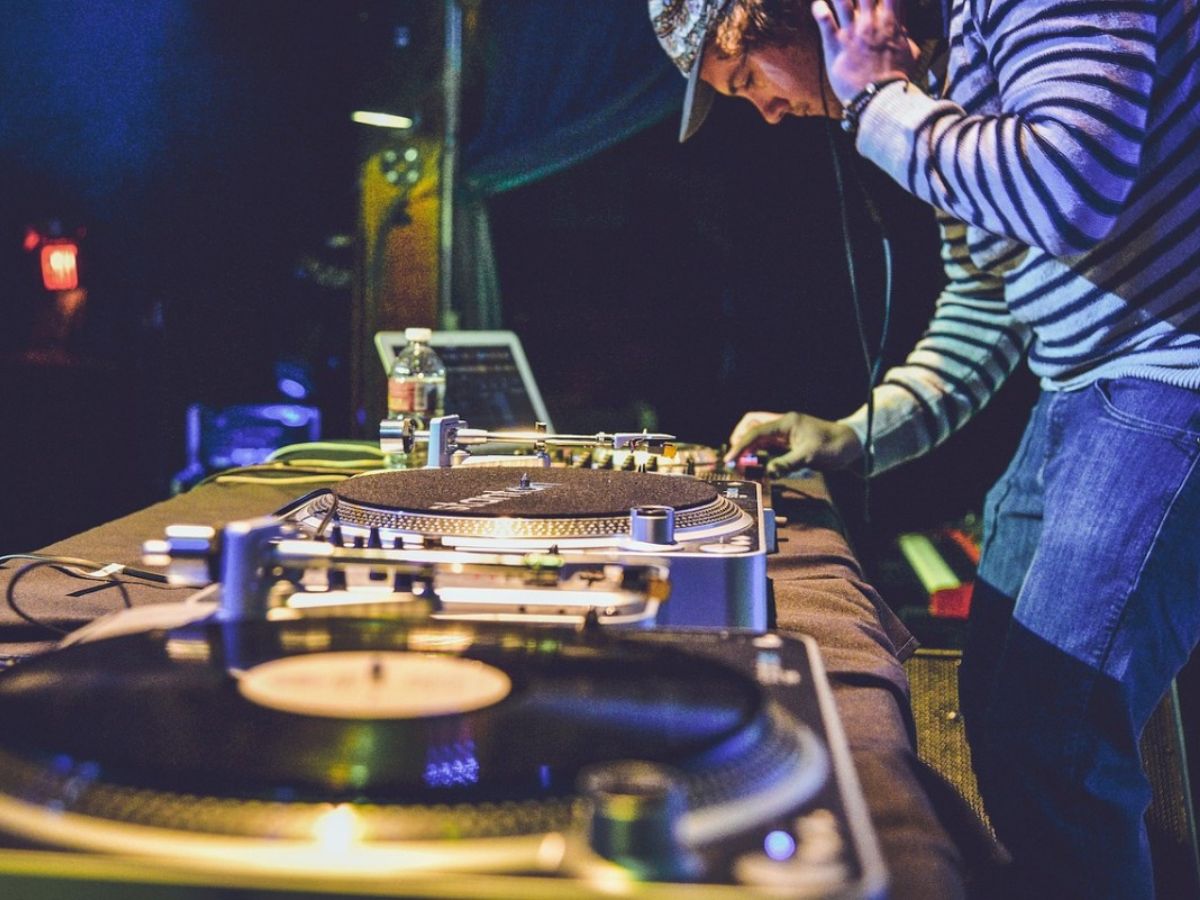

Hip Hop
What Kind Of Dance Is Hip Hop
Modified: January 22, 2024
Discover the dynamic and energetic world of Hip Hop dance, blending rhythm, groove, and urban style. Uncover the origins, techniques, and evolution of this popular urban dance genre.
(Many of the links in this article redirect to a specific reviewed product. Your purchase of these products through affiliate links helps to generate commission for AudioLover.com, at no extra cost. Learn more)
Table of Contents
Introduction
Hip Hop is more than just a genre of music; it is a cultural movement that has transcended generations and countries. One of the most prominent forms of artistic expression within this movement is Hip Hop dance, which has its roots in the streets of African-American and Latinx communities in New York City during the 1970s. From its humble beginnings, Hip Hop dance has evolved into a dynamic and influential art form that showcases creativity, athleticism, and self-expression.
What sets Hip Hop dance apart is its vibrant energy, intricate footwork, and rhythmic movements that perfectly synchronize with the beat of the music. It is characterized by its raw and urban style, incorporating elements of breaking, popping, locking, and freestyle. Hip Hop dance is not limited to a specific set of rules or techniques, which allows for endless innovation and personal interpretation.
The origins of Hip Hop dance can be traced back to block parties and street gatherings in the South Bronx. DJs would mix funk, soul, and R&B records, while emcees would rap over the beats, creating a unique musical backdrop for dancers to showcase their skills. These dance battles became a central element of the Hip Hop culture, giving birth to a new dance movement that would reshape the world of dance forever.
Over the years, Hip Hop dance has been influenced by various dance styles, including African, jazz, tap, and martial arts. Each of these influences contributed to the development of new techniques and movements, resulting in a rich and diverse dance vocabulary. Hip Hop dance has also been shaped by the artists and pioneers who paved the way, such as the Rock Steady Crew, the Electric Boogaloos, and B-boys like Crazy Legs and Mr. Wiggles.
Today, Hip Hop dance has become a global phenomenon, with dancers from all corners of the world embracing the culture and adding their own unique flavor to the movement. It has found its way into mainstream media, appearing in music videos, commercials, movies, and even competitive dance shows. Hip Hop dance has become a powerful form of self-expression, allowing individuals to tell their stories, convey emotions, and connect with others through movement.
In the following sections, we will delve deeper into the origins of Hip Hop dance, explore its influences, discuss the basic elements and popular styles, and examine its impact on popular culture. So, grab your dancing shoes and get ready to immerse yourself in the fascinating world of Hip Hop dance.
Origins of Hip Hop Dance
Hip Hop dance emerged in the streets of the South Bronx in the 1970s. It was born out of the creativity and resilience of African-American and Latinx communities who were seeking new ways to express themselves. The social and economic struggles faced by these communities provided a fertile ground for the development of a new dance form that would eventually become an integral part of Hip Hop culture.
The origins of Hip Hop dance can be traced back to the block parties and street gatherings that took place in neighborhoods like Hunts Point, Harlem, and the South Bronx. These vibrant gatherings brought together DJs, emcees, and dancers, creating a unique atmosphere of energy and self-expression. DJs would mix records from various genres, blending funk, soul, and R&B, while emcees would rap over the beats, engaging with the crowd and adding a lyrical element to the music.
It was within this musical backdrop that dancers started to develop their own movements and styles. The dance battles became a central element of these gatherings, with dancers showcasing their skills in a competitive and freestyle manner. These battles allowed dancers to prove their creativity, physicality, and ability to improvise, setting the foundation for the evolution of Hip Hop dance.
One of the key figures in the early years of Hip Hop dance was August “Boogaloo” Lozano, a dancer and choreographer who became known for his unique moves. Lozano was a member of the Elvin Bethea Lockers, a group of talented dancers who incorporated locking, popping, and funk styles into their routines. Their influence spread throughout the Hip Hop community, contributing to the growth and development of the dance form.
Another significant figure in the origins of Hip Hop dance was the Rock Steady Crew, formed by Jimmy D and Jojo. This group of B-boys (breakdancers) brought a new level of athleticism and acrobatics to the dance, incorporating floor moves, spins, and freezes into their routines. The Rock Steady Crew gained recognition for their performances and helped popularize Hip Hop dance on a global scale.
As Hip Hop dance continued to evolve, it also drew inspiration from other dance styles, such as African, jazz, tap, and martial arts. Dancers began to fuse these influences with their own unique movements, creating a dynamic and diverse vocabulary of steps and combinations. This fusion of different dance styles contributed to the rich and eclectic nature of Hip Hop dance.
Overall, the origins of Hip Hop dance can be attributed to the strong community spirit, cultural exchange, and creative ingenuity of marginalized communities in the South Bronx. It was a form of self-expression and empowerment that broke boundaries and provided an outlet for individuals to showcase their talent and find their voice. Today, the origins of Hip Hop dance continue to inform and inspire dancers all over the world as they explore new movements and push the boundaries of what is possible within the art form.
Influences on Hip Hop Dance
Hip Hop dance is a constantly evolving art form that has been influenced by a wide range of dance styles, cultures, and artists. These influences have shaped the unique characteristics and movements that make up the vibrant world of Hip Hop dance. From African and jazz to martial arts and contemporary dance, the fusion of various forms has contributed to the diversity and creativity of Hip Hop dance.
One of the key influences on Hip Hop dance is African dance. The rhythmic movements, footwork, and polyrhythms found in African dance styles have played a significant role in shaping the foundations of Hip Hop dance. The use of isolated body movements, emphasis on the hips, and energetic footwork can be traced back to African dance traditions. The power and expressiveness of African dance are deeply embedded in the soul of Hip Hop dance.
Jazz dance has also had a profound impact on Hip Hop dance. The fluidity, technicality, and improvisation of jazz dance have influenced the way Hip Hop dancers interpret and execute movement. Jazz dance has contributed to the development of intricate footwork, isolations, and syncopated rhythms in Hip Hop dance. The emphasis on musicality and versatility in jazz dance has heightened the performance quality and expression in Hip Hop dance.
Another influence on Hip Hop dance is martial arts. The discipline, precision, and physicality of martial arts have found their way into the dance form, adding a dynamic and visually striking element. The incorporation of martial arts movements, such as kicks, punches, and flips, have become synonymous with the power moves and acrobatics seen in Hip Hop dance. Martial arts also emphasize body control, balance, and agility, which are essential skills for Hip Hop dancers.
Contemporary dance has also left its mark on Hip Hop dance. The fluidity, versatility, and fusion of styles found in contemporary dance have expanded the boundaries of Hip Hop dance. Contemporary dance has brought a sense of artistry and storytelling to Hip Hop, encouraging dancers to explore emotional depth and convey narratives through movement. The incorporation of contemporary dance techniques and concepts has added a new layer of expression to Hip Hop dance.
It is important to acknowledge the contributions of individual dancers and choreographers who have pushed the boundaries of Hip Hop dance and brought their unique styles to the forefront. Visionaries like Popin’ Pete, Mr. Wiggles, and Brian Green have not only made significant contributions to the dance form but have also inspired and influenced generations of dancers.
The influences on Hip Hop dance are ever-evolving. As the dance form continues to grow and expand, new influences from different cultures, dance styles, and artistic genres will undoubtedly shape its future. The fusion of diverse influences is what keeps Hip Hop dance fresh, innovative, and reflective of the ever-changing world around us.
Basic Elements of Hip Hop Dance
Hip Hop dance is characterized by a set of fundamental elements that form the backbone of the art form. These elements encompass the distinctive movements, style, and attitude that make Hip Hop dance unique. Understanding these basic elements is essential for anyone looking to learn and master Hip Hop dance.
1. Isolations: Isolations are a key component of Hip Hop dance. They involve moving one part of the body while keeping the rest still. Isolations allow dancers to create intricate and precise movements, highlighting body control and coordination.
2. Popping and Locking: Popping and locking are two distinct styles within Hip Hop dance. Popping involves contracting and releasing the muscles to create a jerking or popping effect. Locking, on the other hand, involves freezing or “locking” into specific positions, often with exaggerated arm movements. Mastery of these styles requires precision and rhythm.
3. Footwork: Footwork is a fundamental aspect of Hip Hop dance. It involves intricate and agile movements of the lower body, utilizing quick steps, slides, and turns. Footwork is characterized by its syncopated rhythms and the ability to seamlessly transition between different movements.
4. B-boying/B-girling (Breaking): Breaking, also known as b-boying or b-girling, is one of the most iconic elements of Hip Hop dance. It encompasses various acrobatic and athletic movements, including toprock (standing footwork), downrock (floorwork), freezes (static poses), and power moves (dynamic and gymnastic movements). Breaking requires strength, agility, and creativity, allowing dancers to showcase their individual style during battles and performances.
5. Freestyle: Freestyle is a core component of Hip Hop dance. It involves improvisation and the ability to interpret the music in the moment. Freestyle enables dancers to express their own individuality, creativity, and personality through movement. It is a key element in dance battles and cyphers, where dancers showcase their skills and engage with the music and the crowd.
6. Musicality: Musicality is the ability to interpret and connect with the rhythm, melody, and lyrics of a song. It involves understanding the nuances of the music and incorporating those elements into the dance. Musicality allows dancers to add depth and emotion to their movements, making them more visually captivating and engaging.
7. Style and Attitude: Hip Hop dance is not just about the movements; it is also about the style and attitude portrayed by the dancers. Hip Hop dance is characterized by its confident, bold, and expressive nature. It encourages dancers to bring their own unique personality and vibe to their performances, enhancing the overall experience and impact.
These basic elements serve as the foundation of Hip Hop dance, providing a framework for dancers to explore and create. However, it’s important to note that Hip Hop dance is a constantly evolving art form, with new styles and techniques emerging over time. The combination of these elements and the incorporation of personal style and innovation allow for the continuous growth and evolution of Hip Hop dance.
Popular Styles of Hip Hop Dance
Hip Hop dance encompasses a wide range of styles and variations, each with its own unique movements, rhythm, and cultural influences. These popular styles of Hip Hop dance have emerged from different regions, communities, and subcultures, contributing to the diversity and richness of the art form.
1. Breaking (B-boying/B-girling): Breaking, also known as b-boying or b-girling, is one of the most well-known and iconic styles of Hip Hop dance. It originated in the 1970s in the Bronx, New York, and is characterized by its acrobatic and athletic movements. Breaking includes toprock (standing footwork), downrock (floorwork), freezes (static poses), and power moves (dynamic and gymnastic movements). It is often showcased in dance battles and performances, where dancers exhibit their strength, creativity, and individuality.
2. Popping and Locking: Popping and locking are two distinct styles within Hip Hop dance that originated on the West Coast of the United States in the 1970s. Popping involves contracting and releasing the muscles to create a jerking or popping effect, while locking focuses on freezing or “locking” into specific positions, often with exaggerated arm movements. Both styles require precise control, musicality, and coordination. Popping and locking are commonly seen in music videos, performances, and dance battles.
3. Krumping: Krumping, born out of the streets of South Central Los Angeles, is a highly energetic and expressive style of Hip Hop dance. It emerged in the early 2000s as a form of release and creative expression for African-American youth facing adversity. Krumping is characterized by its intense, frenetic movements, including chest pops, arm swings, stomps, and facial expressions. It is often performed in freestyle battles, where dancers compete to showcase their passion, emotions, and raw energy.
4. House Dance: House dance originated in the underground clubs of Chicago and New York in the 1980s. It combines elements of footwork, locking, and other street dance styles with influences from disco and electronic music. House dance is characterized by its fluidity, footwork patterns, and intricate lower body movements. It emphasizes musicality, improvisation, and individual style. House dance has gained popularity around the world and is often seen in club settings and underground dance events.
5. Waacking: Waacking, also spelled as whacking, originated in the 1970s within the LGBTQ+ communities of Los Angeles. It is characterized by its flamboyant arm and hand movements, performed to the rhythm of disco and funk music. Waacking incorporates poses, spins, and dramatic gestures, often influenced by old Hollywood glam and vogueing. It is a style that exudes confidence, elegance, and self-expression.
6. Hip Hop Choreography: Hip Hop choreography refers to structured and pre-planned routines set to Hip Hop music. This style of Hip Hop dance combines various elements, movements, and styles, creating visually captivating and synchronized performances. Hip Hop choreography is often seen in music videos, stage shows, and dance competitions. It blends the creativity and individuality of Hip Hop with the precision and synchronization of choreography.
These popular styles of Hip Hop dance represent just a fraction of the rich and diverse world of Hip Hop movement. Each style carries its own history, cultural significance, and artistic expression. What makes Hip Hop dance so exciting and ever-evolving is the constant emergence of new styles and fusions, pushing the boundaries of creativity and self-expression within the culture.
Choreography and Freestyle in Hip Hop Dance
Choreography and freestyle are two distinct yet interconnected facets of Hip Hop dance. While choreography involves structured and pre-planned routines, freestyle is all about spontaneous and improvised movement. Both choreography and freestyle play significant roles in the development and evolution of Hip Hop dance.
Choreography in Hip Hop dance refers to the creation and execution of planned routines set to specific music. Choreographers employ their skills and creativity to design sequences that incorporate various Hip Hop styles, movements, and techniques. These routines can range from solo performances to group formations, showcasing synchronization, precision, and storytelling.
Hip Hop choreography often incorporates elements of other dance styles and may draw inspiration from contemporary, jazz, or even traditional dances. Choreographers utilize these influences to create dynamic and visually striking performances. Choreography adds structure and cohesion to Hip Hop dance, allowing dancers to work together as a cohesive unit and deliver a polished and synchronized performance.
Freestyle, on the other hand, is the spontaneous and improvised movement within Hip Hop dance. In freestyle, dancers respond to the music in the present moment, allowing their bodies to naturally interpret the rhythm and melody. Freestyle is a true testament to the individuality, creativity, and personal expression of the dancer.
In freestyle, dancers have the freedom to explore and experiment with different movements and styles. It is a way for them to showcase their unique personality, skills, and musical interpretation. Freestyle is often seen in dance battles, cyphers, and jam sessions, where dancers engage with each other and the music, creating a vibrant and energetic environment.
Choreography and freestyle are interconnected and mutually beneficial. Choreography provides a structured framework for dancers to refine their technique, work collaboratively, and learn new movements. It allows for the development of complex routines that showcase the creativity and skill of the dancers. On the other hand, freestyle builds improvisational abilities, musicality, and individual style. It encourages dancers to push their boundaries, think on their feet, and express themselves authentically.
Both choreography and freestyle contribute to the growth and evolution of Hip Hop dance. Choreographed routines become showcases for the art form, allowing choreographers and dancers to present their vision and message to a wider audience. Freestyle, on the other hand, keeps Hip Hop dance fresh, spontaneous, and rooted in its improvisational origins. It ensures that Hip Hop dance remains an ever-evolving and innovative art form.
Choreography and freestyle are not mutually exclusive within Hip Hop dance. Dancers often incorporate elements of both in their performances, blending planned routines with moments of improvisation. This fusion allows for a unique balance between precision and self-expression, adding depth, versatility, and excitement to the art of Hip Hop dance.
Hip Hop Dance in Popular Culture
Hip Hop dance has permeated popular culture, leaving an indelible mark on music videos, movies, TV shows, and even mainstream dance competitions. It has become a powerful form of artistic expression and a source of inspiration for people worldwide. The influence of Hip Hop dance can be seen in various facets of popular culture.
One prominent area where Hip Hop dance has made a significant impact is music videos. From the early days of breakdancing in the ’80s to the intricate choreography seen in modern music videos, Hip Hop dance has been integral to the visual storytelling of musical artists. Choreographers and dancers collaborate with musicians to bring their songs to life through captivating and synchronized movement. Music videos have provided a platform for Hip Hop dancers to showcase their skills and creativity, helping to popularize and spread the art form to a broader audience.
Movies like “Breakin’,” “Step Up,” and “You Got Served” have also played a pivotal role in bringing Hip Hop dance to mainstream audiences. These films not only highlight the technicality and artistry of Hip Hop dance but also explore the personal journeys and challenges faced by dancers. Through these cinematic portrayals, Hip Hop dance has gained further recognition and appreciation, inspiring a new generation of dancers.
Television shows and competitions have also contributed to the rise of Hip Hop dance in popular culture. Shows like “America’s Best Dance Crew” and “World of Dance” have provided a platform for Hip Hop dancers to compete, showcase their talent, and gain exposure. These shows have not only created a space for dancers to display their skills but have also broadened the understanding and acceptance of Hip Hop dance as a legitimate form of art and athleticism.
In addition to its influence on visual media, Hip Hop dance has also infiltrated other dance disciplines. Contemporary dance, jazz, and even ballet have incorporated elements of Hip Hop into their choreography, blending styles and creating exciting fusions. This cross-pollination of dance forms has expanded the boundaries of Hip Hop dance and allowed for new and innovative artistic expressions.
Beyond the entertainment industry, Hip Hop dance has also become a means of empowerment and social change. Dance studios and community centers provide a safe space for individuals of all backgrounds to express themselves through movement. Hip Hop dance workshops and classes offer opportunities for personal growth, confidence-building, and community engagement, fostering a sense of belonging and unity among participants.
Moreover, the globalization of Hip Hop has led to the emergence of vibrant Hip Hop dance communities worldwide. Countries such as France, Japan, South Korea, and Brazil have embraced Hip Hop dance and incorporated their own cultural elements into the art form. This cultural exchange has enriched the diversity and creativity of Hip Hop dance, showcasing its universality and impact on a global scale.
Hip Hop dance has become more than just a form of entertainment; it has become a powerful cultural phenomenon. Its presence in popular culture has allowed for broader recognition, appreciation, and acceptance of the art form. Whether in music videos, movies, TV shows, or community spaces, Hip Hop dance continues to inspire, unite, and captivate audiences around the world.
Impact and Evolution of Hip Hop Dance
Hip Hop dance has had a profound impact on both the dance world and society at large. From its humble origins in the streets of the South Bronx in the 1970s to its global reach today, Hip Hop dance has transformed not only the way we move but also the way we think and communicate.
One of the most significant impacts of Hip Hop dance is its ability to empower and uplift individuals. Hip Hop dance provides an outlet for self-expression, creativity, and personal growth. It offers a means of storytelling and catharsis, allowing dancers to convey their emotions and experiences through movement. This form of artistic expression has helped individuals discover their voices, build confidence, and develop a sense of identity and belonging.
Furthermore, Hip Hop dance has played a crucial role in fostering community and connection. Dance battles, cyphers, and social gatherings have provided spaces for dancers to come together, share their passion, and engage in friendly competition. From local communities to international events, Hip Hop dance has created a sense of unity among dancers, transcending barriers of age, ethnicity, and background.
In terms of cultural impact, Hip Hop dance has been an influential force in breaking down social barriers and challenging stereotypes. Originating in marginalized communities, Hip Hop dance has defied conventional norms of what dance should look like, inviting people from all walks of life to participate and embrace the art form. It has enabled individuals to celebrate their heritage, cultural roots, and personal narratives, resulting in a more inclusive and diverse dance landscape.
Additionally, Hip Hop dance has left an enduring mark on mainstream media and popular culture. From music videos to commercials, movies, and TV shows, Hip Hop dance has become an integral part of the entertainment industry. It has inspired choreographers, designers, directors, and artists to incorporate the vibrancy and energy of Hip Hop into their work. Through widespread exposure in popular culture, Hip Hop dance has gained recognition and appreciation globally.
The evolution of Hip Hop dance has been marked by constant innovation and exploration. As the art form has expanded worldwide, dancers have continually pushed the boundaries, fusing different styles and influences to create new variations. From the foundational movements of breaking and popping to the emergence of subgenres like krumping and waacking, Hip Hop dance has evolved into a dynamic and ever-evolving form of artistic expression.
Moreover, the evolution of Hip Hop dance has been closely tied to advancements in technology and digital media. Social media platforms have provided a space for dancers to share their talents, connect with others, and gain exposure. The dissemination of dance tutorials, challenges, and performances online has facilitated the growth of Hip Hop dance communities and inspired a new generation of dancers.
From its early beginnings as a local street culture to its global reach today, Hip Hop dance has transcended boundaries and had a lasting impact on individuals, communities, and the broader cultural landscape. Its ability to empower, connect, and inspire has cemented its status as a powerful form of artistic expression, shaping the way we move, communicate, and understand our place in the world.
Conclusion
Hip Hop dance has become an undeniable force within the world of dance and popular culture. From its origins in the streets of the South Bronx to its global reach today, Hip Hop dance has evolved into a dynamic and influential art form that transcends boundaries and captures the hearts of millions.
With its distinct style, energy, and expressive movements, Hip Hop dance has empowered individuals, fostered community connections, and challenged societal norms. It has served as an outlet for self-expression, allowing dancers to tell their stories, convey their emotions, and find their voices. Hip Hop dance has provided a platform for personal growth, confidence-building, and artistic exploration.
The impact of Hip Hop dance extends far beyond the dance floor. It has broken down barriers, challenged stereotypes, and encouraged inclusivity and diversity. Hip Hop dance has opened doors for individuals from all walks of life, inviting them to embrace their cultural heritage and celebrate their uniqueness through movement.
Through music videos, movies, TV shows, and social media platforms, Hip Hop dance has become a visible and influential part of popular culture. It has inspired countless artists, designers, and choreographers to incorporate elements of Hip Hop into their work, leading to its widespread recognition and appreciation.
The evolution of Hip Hop dance has been marked by constant innovation and fusions with other dance styles, contributing to its dynamic nature. As the art form continues to evolve, dancers around the world blend different styles, push boundaries, and create their own unique interpretations of Hip Hop dance.
In conclusion, Hip Hop dance has left an indelible mark on the world of dance and society as a whole. Its impact on personal empowerment, community building, cultural representation, and popular culture cannot be overstated. As Hip Hop dance continues to evolve and expand, it will undoubtedly inspire future generations of dancers and continue to be a powerful form of self-expression and artistic exploration.

